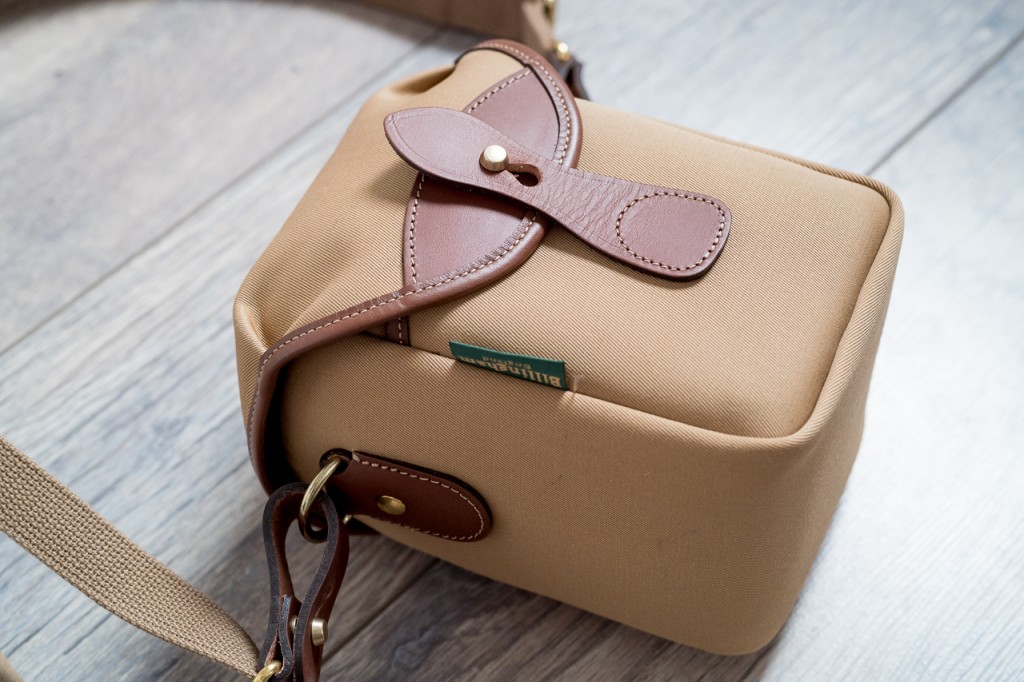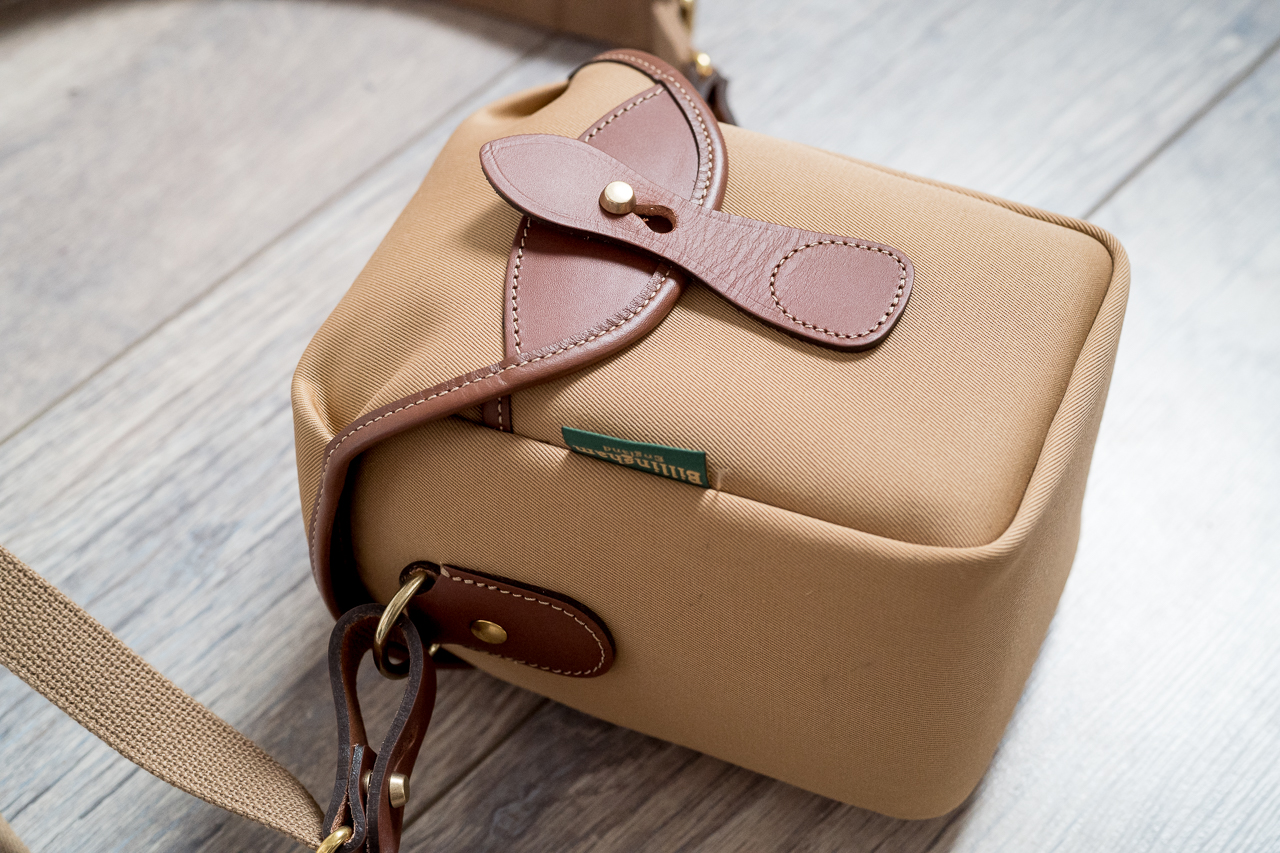Billingham has always been a brand that is being loved by Leica photographers and other rangefinder shooters. Since the M6 days however, the world of photography has changed dramatically. Traditionally, there were either big (D)SLRs or small rangefinders. Today, we still have DSLRs and rangefinders, but also a whole new range of mirrorless cameras, like the Sony A-series, many different types of Fuji cameras and a few other brands. Even Leica has a range of APS-C cameras that get better every year. With the changes in cameras, we need other bags too.
The Billingham 72 is designed for rangefinders and small APS-C type of cameras with a small lens attached. That could be an M with 35 or 50 Summilux, CL with 23 Summicron (with hood), or a Fuji X-Pro with a small lens. Many cameras will fit, but you’re limited to a relatively small (and only one) lens. That makes the 72 ideal for the travel and street photographer who wants to work with minimalistic gear but who also wants maximum protection. A bit more on this later.
That makes the 72 ideal for the travel and street photographer who wants to work with minimalistic gear but who also wants maximum protection
Protection is the key word here. The 72 almost feels like a hard case: it is unbelievably sturdy. Billingham used two layers of foam protection for this bag and because it is small, the double foam creates a nice hard-case like camera bag. On top of that double layer foam, Billingham uses a very thick removable cushion for the bottom of the bag. If you’d drop your bag and it landed on the bottom, I’m quite sure your camera would be perfectly fine. The bottom cushion adds to the rigidness of the bag. If you take it out, you can ‘squeeze’ the sides together a bit easier.
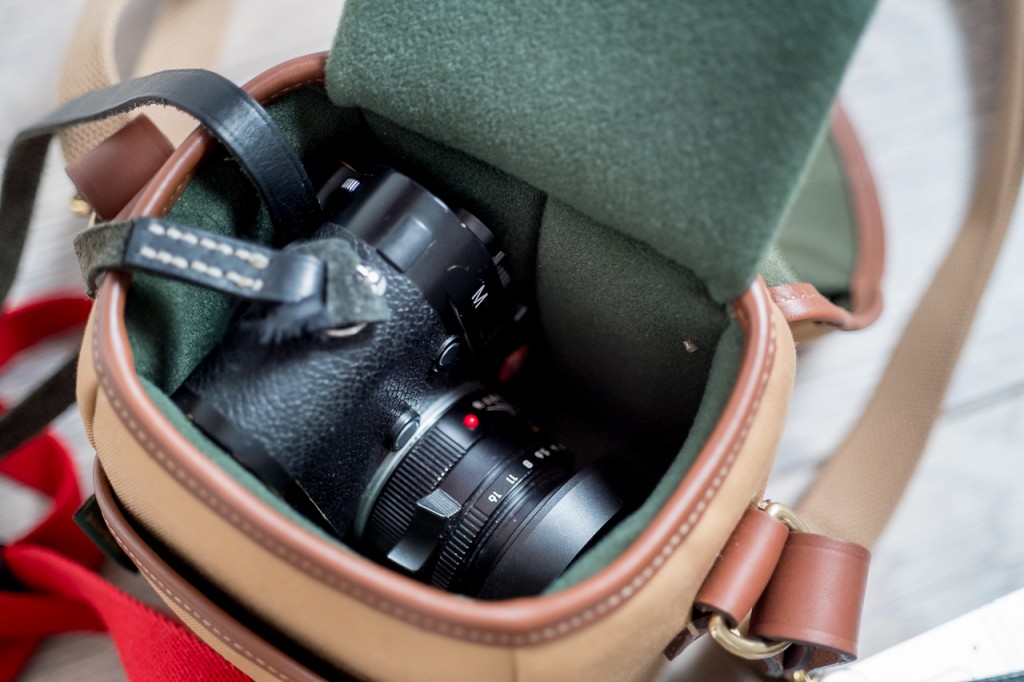
But it doesn’t stop at foam and cushions. The outer layer will also protect your camera from rain, snow, hail, any other wet misery. Both the canvas material and FibreNyte have proven to work perfectly. As I have said before, I’d choose a Billingham for any outing in bad weather above any other bag. Nylon bags are far from waterproof and need an extra cover to protect the contents of your bag from rain. Adding a cover renders the bag almost useless, because it makes getting your camera in and out a pain. The rubber StormBlock layer in between the two layers of canvas makes the Billingham 72 truly waterproof enough for any weather, as long as you don’t submerge the bag.
The rubber StormBlock layer in between the two layers of canvas makes the Billingham 72 truly waterproof enough for any weather
Although the Billingham 72 is minimalistic when it comes to offering storage room, it does feature a small, but slightly stretchy front pocket where you can fit a couple of batteries and spare SD cards. A charger is slightly too big (unless a charger is all you take).
So I stated that the 72 is suitable for a rangefinder type camera and one small lens, but it’s slightly more complicated. The 72 is equipped with one detachable divider and while that seems unnecessary when you’re taking an M with 35 or 50 Summicron, Billingham includes it for a reason. If you’re bring a very thin camera, like the Leica T, you can fit the divider in the middle of the bag and put a T with the 18/2.8 on one side, and include two small lenses (stacked) on the other side. With the M, or the CL, you could do this too, as long as you leave the lens off the camera. I wouldn’t do that though, because if you take out of one the lenses and put it on your camera, you can’t put camera with lens attached in the bag because of the divider and the remaining lens. It clearly shows again how thin the T with the 18/2.8 is. It also means that the T with Summilux-T 35/1.4 will fit if you leave the divider out. On the CL, I’m not quite sure.
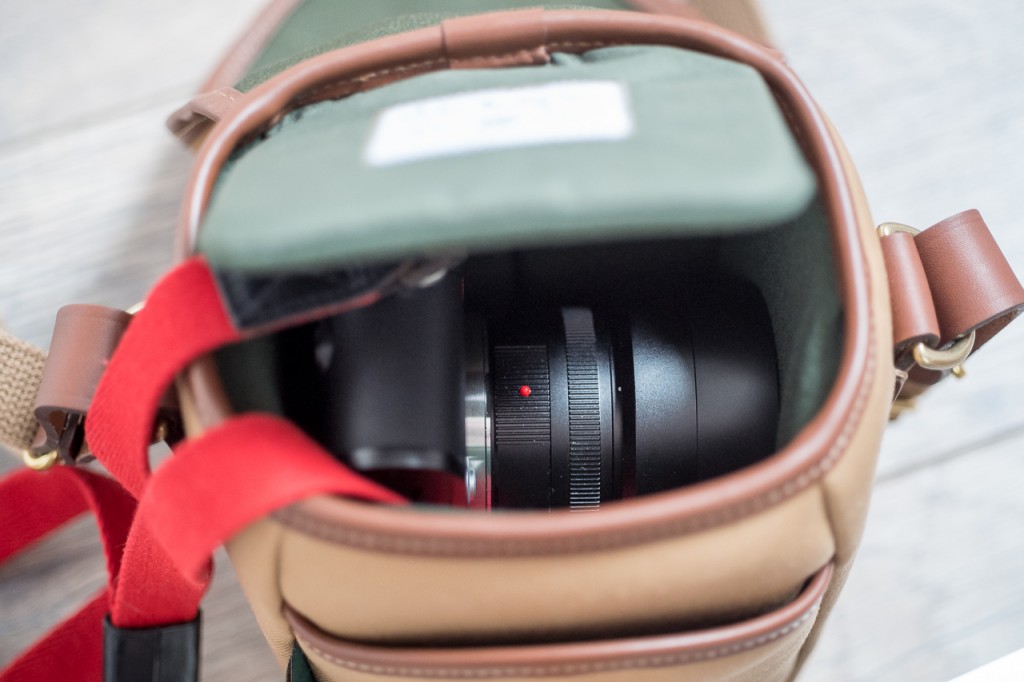
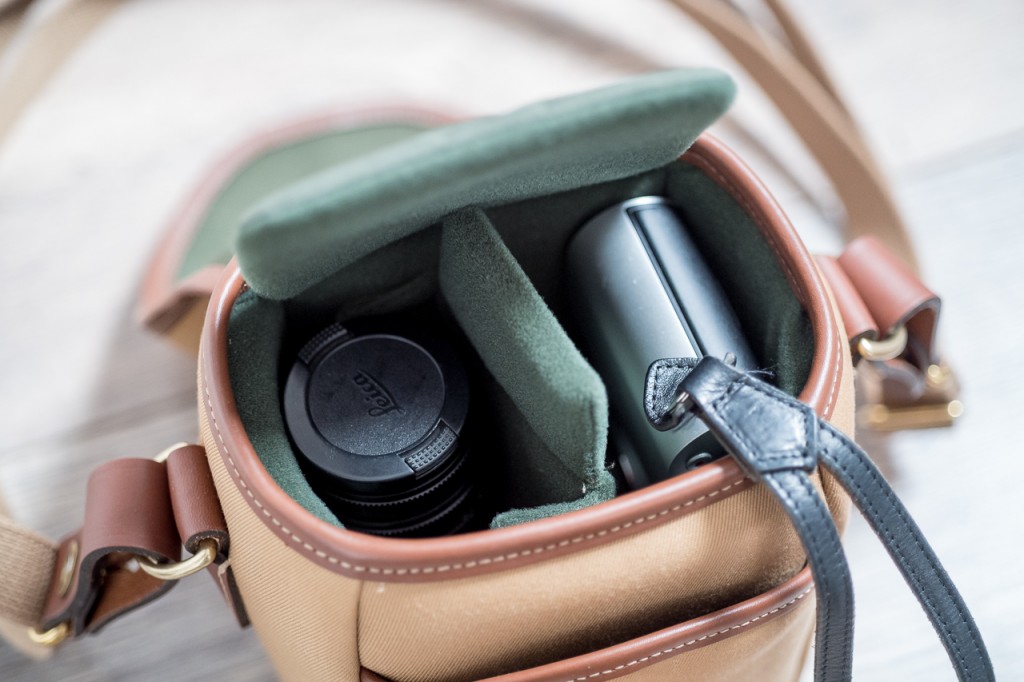
Finally, the 72 has a detachable strap that is adjustable and wears comfortable, even without the option shoulder pad. You could wear the 72 on a belt (it has a strap for that), but I prefer to use the shoulder strap.
Who’s it for and would I buy it? Well, I think any rangefinder or Leica shooter should have at least one small bag where you can fit one camera and one lens. You could use it for walks, day trips with minimalistic gear, or whenever you go out. But there’s another purpose for this bag I think. If you’re traveling with non-photographic bags (a backpack, duffle bag, suitcase, whatever) and want to bring one camera and one (or two) lenses that need good protection, this is the perfect companion. In fact, If I couldn’t bring any carry-on luggage on a flight, I wouldn’t hesitate to fit a camera and lens in the 72, chuck it in a duffle bag and check it in.
Compared to the Billingham Hadely Digital (which I bought a long time ago), the 72 is far more minimalistic and holds much less gear. For day trips where you also need to carry a wallet, a power bank and slightly more stuff, the Digital offers more storage options.
